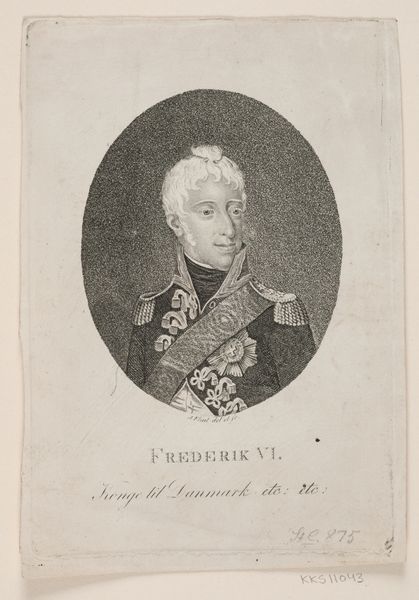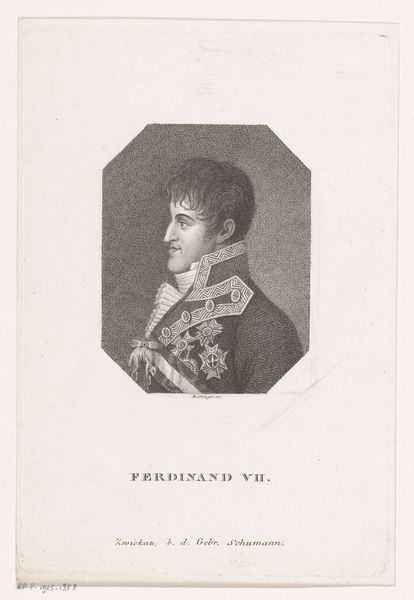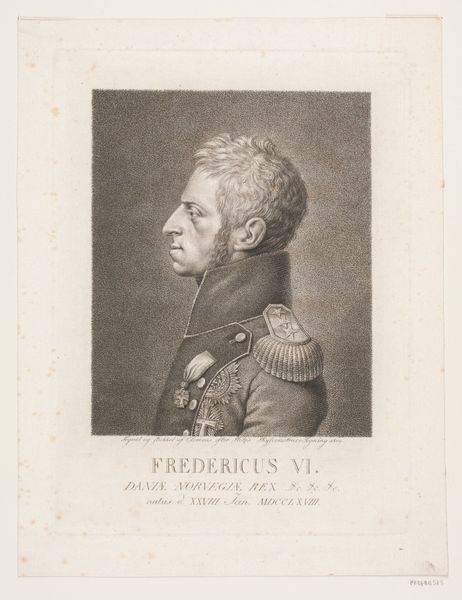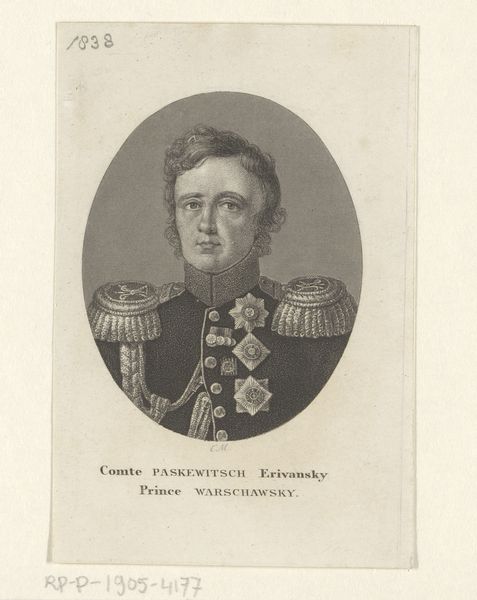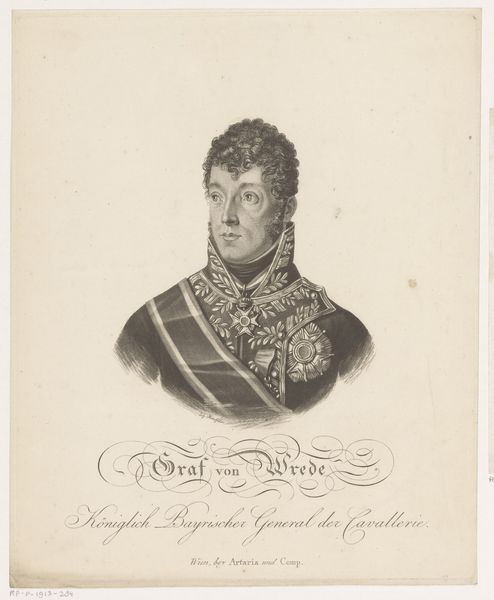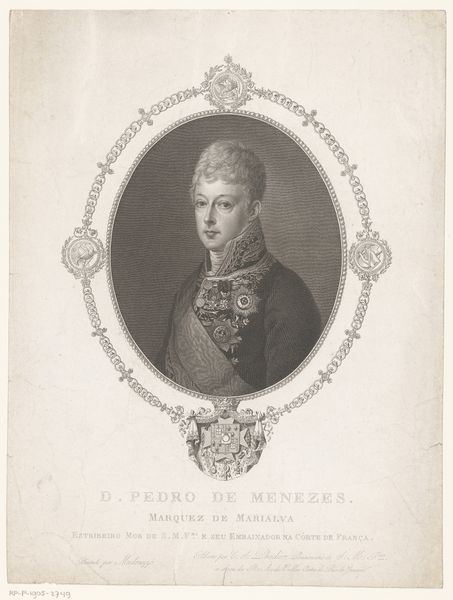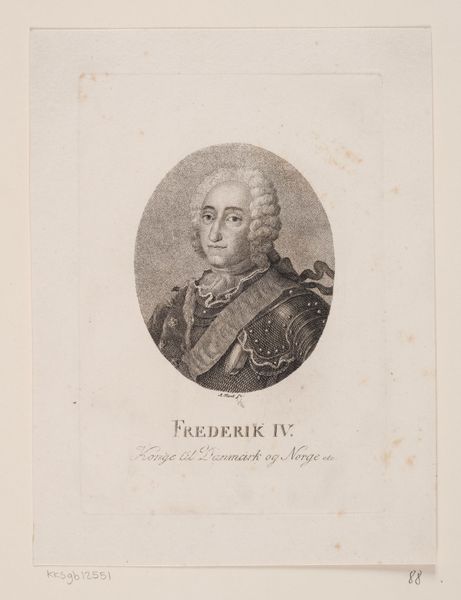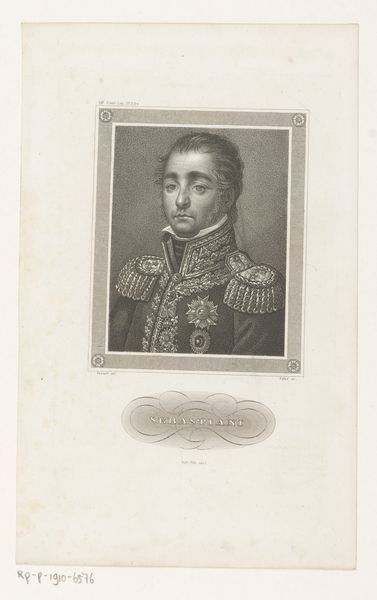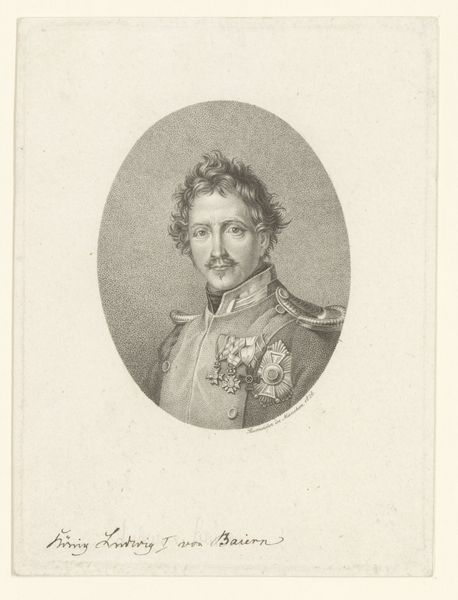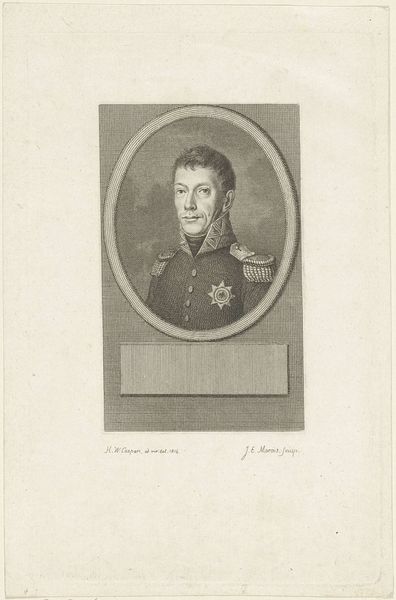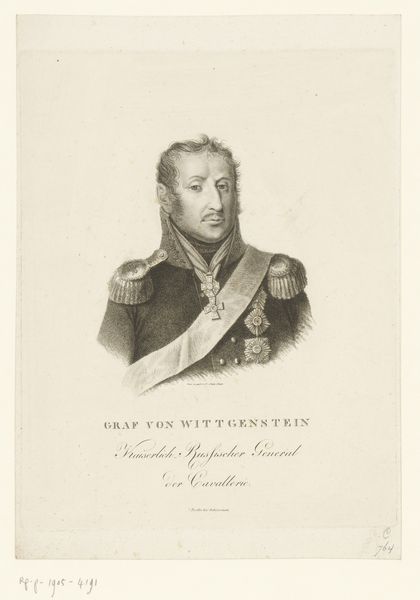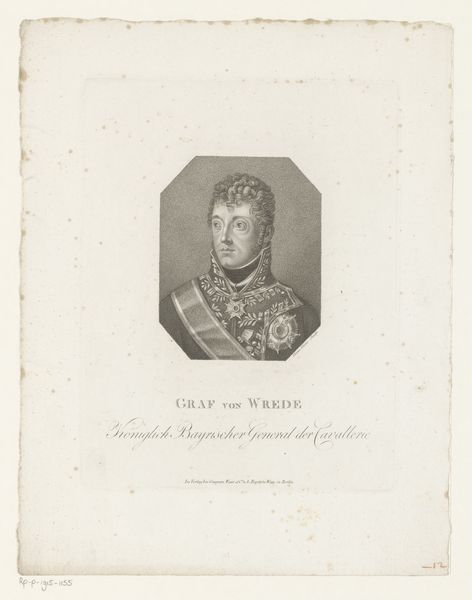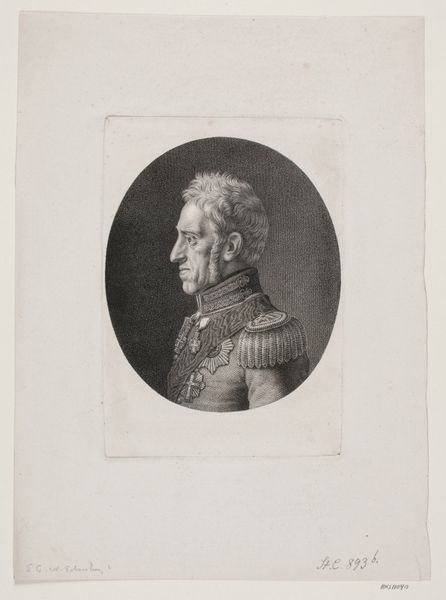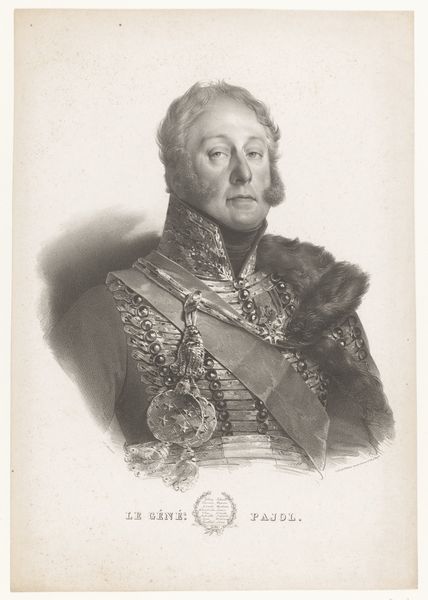
engraving
#
portrait
#
neoclacissism
#
19th century
#
history-painting
#
engraving
Dimensions: height 107 mm, width 70 mm
Copyright: Rijks Museum: Open Domain
Editor: This is Friedrich Rossmässler's "Portrait of Ferdinand I, Emperor of Austria," an engraving dating from 1785 to 1858. There’s a somber formality to it; he’s encased in decorations and finery, but his face seems… resigned, almost. What jumps out at you? Curator: You know, I think you've hit on something. He does look burdened, doesn’t he? Perhaps we're picking up on the weight of the Habsburg dynasty, a legacy pressing down. Consider all the layers here: the sharp neoclassical style, the engraving itself – a medium designed for reproducibility, for projecting an image of power and control, but is he in control? Look at the slightly unfocused gaze, as if he's staring past us, lost in thought or perhaps something less pleasant. Editor: So, the rigid format and symbols of power are almost in conflict with his expression? Is it possible the artist intentionally portrayed that duality, or is that reading too much into it? Curator: I think artists, especially portraitists working for powerful figures, often work with – and against – expectations. Perhaps Rossmässler was attempting to capture something of the *man* beneath the emperor. I imagine someone like Ferdinand might well have felt rather like an elaborately decorated bird in a gilded cage. That’s just a flight of fancy, of course. Editor: It does invite speculation though, doesn't it? Thinking about what lies beneath the surface. It really reframes how I see these formal portraits. Curator: Precisely! And that tension, that space for our imaginations to roam, is where the real conversation begins. History isn’t just dates and names; it’s whispers and shadows too. Editor: Definitely food for thought! Thanks for sharing your perspective.
Comments
No comments
Be the first to comment and join the conversation on the ultimate creative platform.
